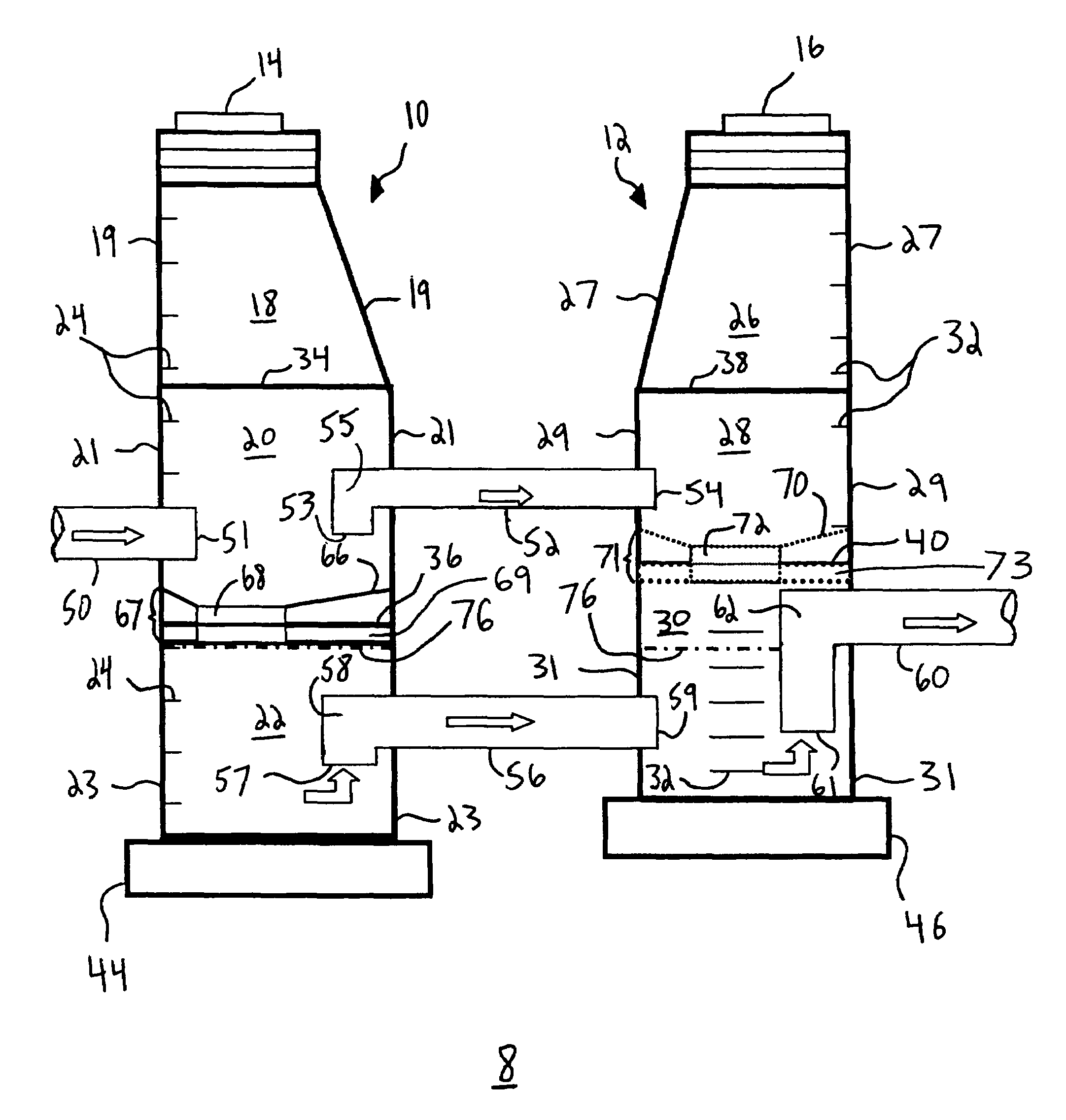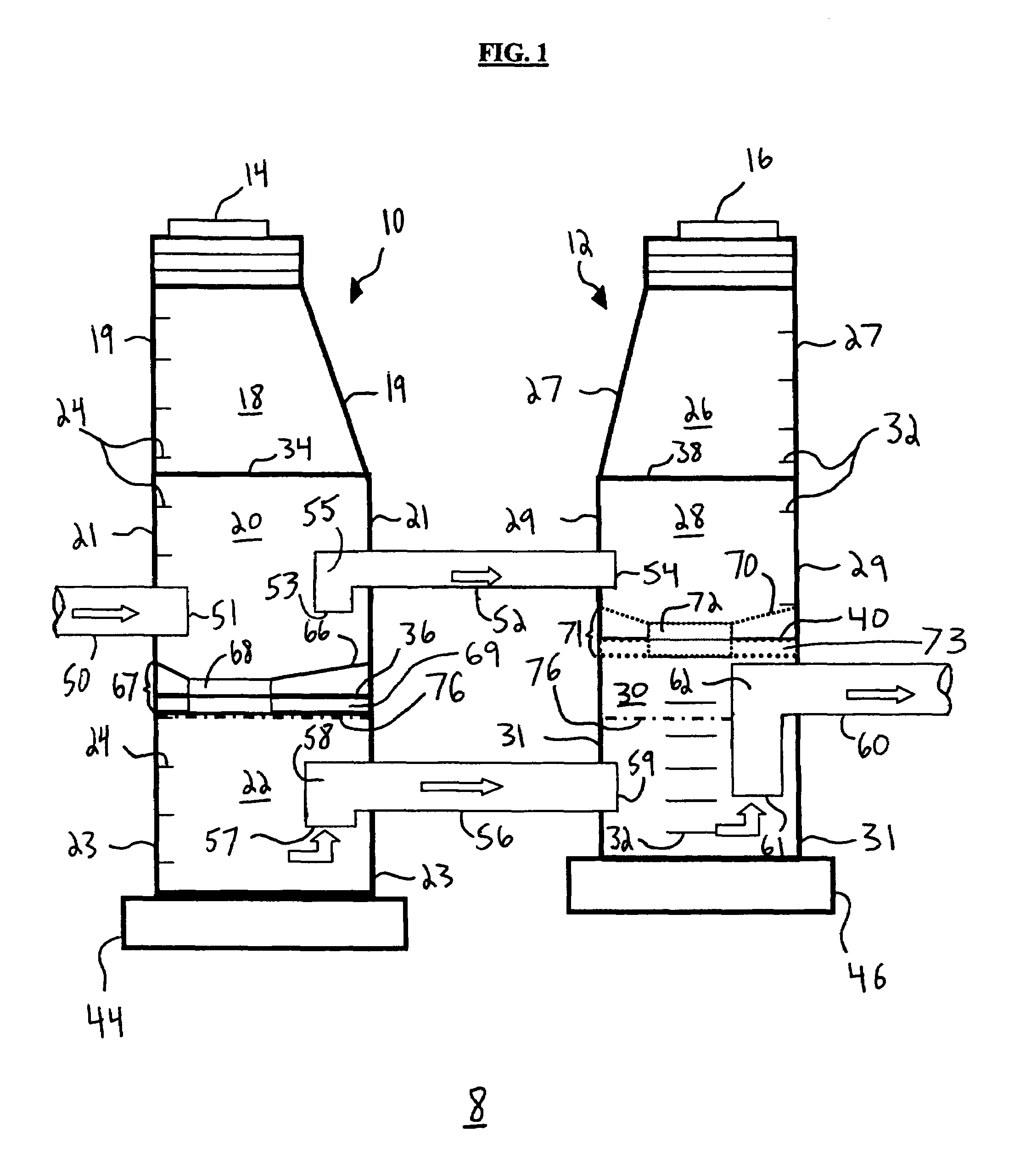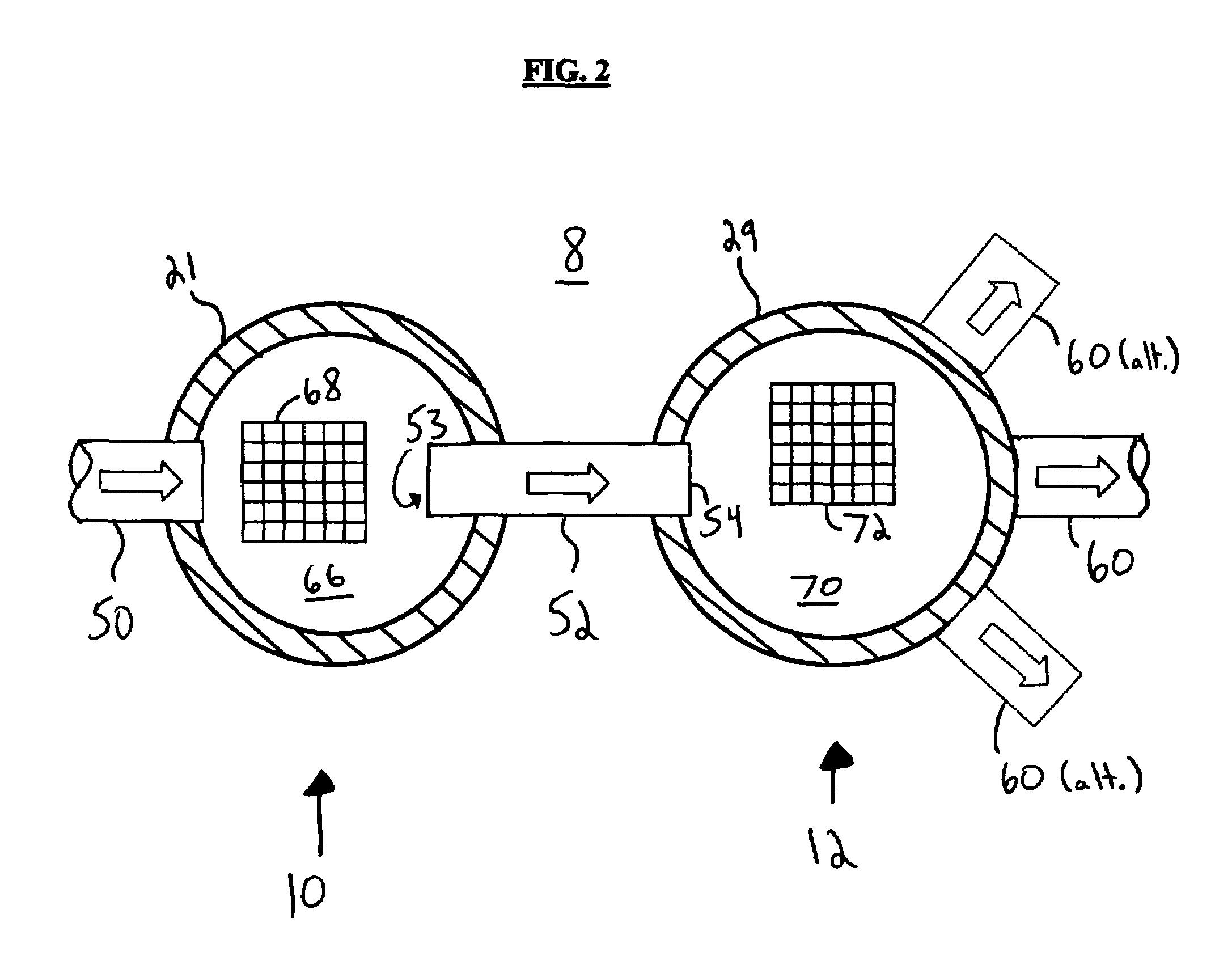Storm water interceptor
a storm water interceptor and interceptor technology, applied in water cleaning, liquid displacement, separation processes, etc., can solve the problems of difficult and expensive installation of oil/grit separators in these sub-surface locations, cumbersome installation, and low efficiency of storm water treatment, so as to improve reduce the cost of construction. , the effect of improving the quality of storm water treatmen
- Summary
- Abstract
- Description
- Claims
- Application Information
AI Technical Summary
Benefits of technology
Problems solved by technology
Method used
Image
Examples
Embodiment Construction
[0015]With reference to FIGS. 1-3, a storm water interceptor 8 provides for the separation of trash, grit, oil, sediments and other debris from storm water. The storm water interceptor 8 is designed to perform such separation efficiently, even in periods of high water volumes.
[0016]FIG. 1 is a cross-sectional view of a first exemplary embodiment of the storm water interceptor 8, which has a primary treatment tank 10 and a secondary treatment tank 12. The treatment tanks 10, 12 are preferably cylindrical or substantially cylindrical in shape. Each treatment tank 10, 12 has a cover 14, 16, respectively. Depending on the particular site installation requirements that are imposed on the storm water interceptor 8, the cover 14 for the primary treatment tank 10 is preferably either a solid manhole lid (not shown) or a catch basin grate (not shown). The cover 16 for the secondary treatment tank 12 is preferably a solid manhole lid to keep large debris from entering the secondary treatment ...
PUM
| Property | Measurement | Unit |
|---|---|---|
| thickness | aaaaa | aaaaa |
| elevation | aaaaa | aaaaa |
| distance | aaaaa | aaaaa |
Abstract
Description
Claims
Application Information
 Login to View More
Login to View More - R&D
- Intellectual Property
- Life Sciences
- Materials
- Tech Scout
- Unparalleled Data Quality
- Higher Quality Content
- 60% Fewer Hallucinations
Browse by: Latest US Patents, China's latest patents, Technical Efficacy Thesaurus, Application Domain, Technology Topic, Popular Technical Reports.
© 2025 PatSnap. All rights reserved.Legal|Privacy policy|Modern Slavery Act Transparency Statement|Sitemap|About US| Contact US: help@patsnap.com



